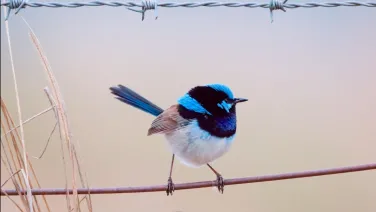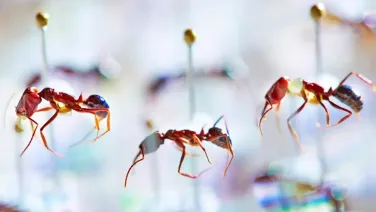
September Newsletter: Issue 171
From the Director
Dear Colleagues,
Here we have another RSB newsletter, packed with information on new members of the RSB community, events, outreach, research infrastructure and achievements. There is also an important announcement from the Research Committee about a new funding scheme. This all speaks to the underlying strength of scholarship in our school.
The HDR retreat at Kioloa was a real highlight in the last month - this serves to bond new and established PhD students and is a lot of fun. My thanks to all concerned - the new members, the mentors and HDR conveners. And none of this would be possible without the enthusiasm and effort of Celeste!
Over the past month, we have seen substantial changes in ANU leadership and a change in direction for the Renew ANU project. We are now moving quickly to the final steps in this protracted and awful process, thankfully now with no forced redundancies. There will be further announcements over the coming week, culminating in the release of the draft CoSM Implementation Plan for comment. The extensive feedback on the original proposal, and frank discussion around this at RSB Exec, has been important in shaping changes to the original proposal.
Throughout, I have been really concerned about the individuals directly impacted and the detrimental effects of the change proposal on cohesion of the School. As we close out the process, I hope that we can come back together to re-establish RSB as a great place to work. The RSB Social Hour Team and the IDEA committee are each planning special events over the coming weeks, and I hope that you all take advantage of the opportunity to step back from your labs and engage.
Welcome
Farewell
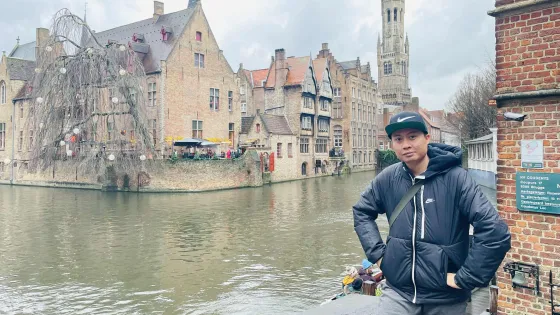
Farewell to Toni Fathoni (BSB, Saliba Group), who has moved to Adelaide University to start a job as a technical officer, working with Danny Wilson and Ben Liffner. Toni finished his PhD in Kevin Saliba's Group, where he investigated thiamine (vitamin B1) as a potential drug target against Plasmodium, the organism that causes malaria. In his new role, Toni will help establish and maintain an animal model for Cryptosporidium (the parasite that causes gastrointestinal infections), as well as undertake in vitro cultivation and genetic manipulation of Cryptosporidium and related Plasmodium species.
Grants Awarded
Emily Cross (Williams and Solomon Groups, PS) has been awarded the Early Career Researcher Grant from AINSE (Australian Institute for Nuclear Science and Engineering) which consists of a payment of up to A$10,000 given to persons in the first five years (full-time equivalent) of their postdoctoral research career.
Congratulations
In the Media
Owen Atkin (PS) has been interviewed by ABC Canberra 666 radio regarding the recent AFFI event Made & Grown - The Future of Food hosted with Cellular Agriculture Australia. You can tune in to the broadcast with at the one hour and 45 minute mark to hear Owen's interview or read the Canberra times article Would you eat meat grown in a lab? It's now on Canberra menus to learn more.
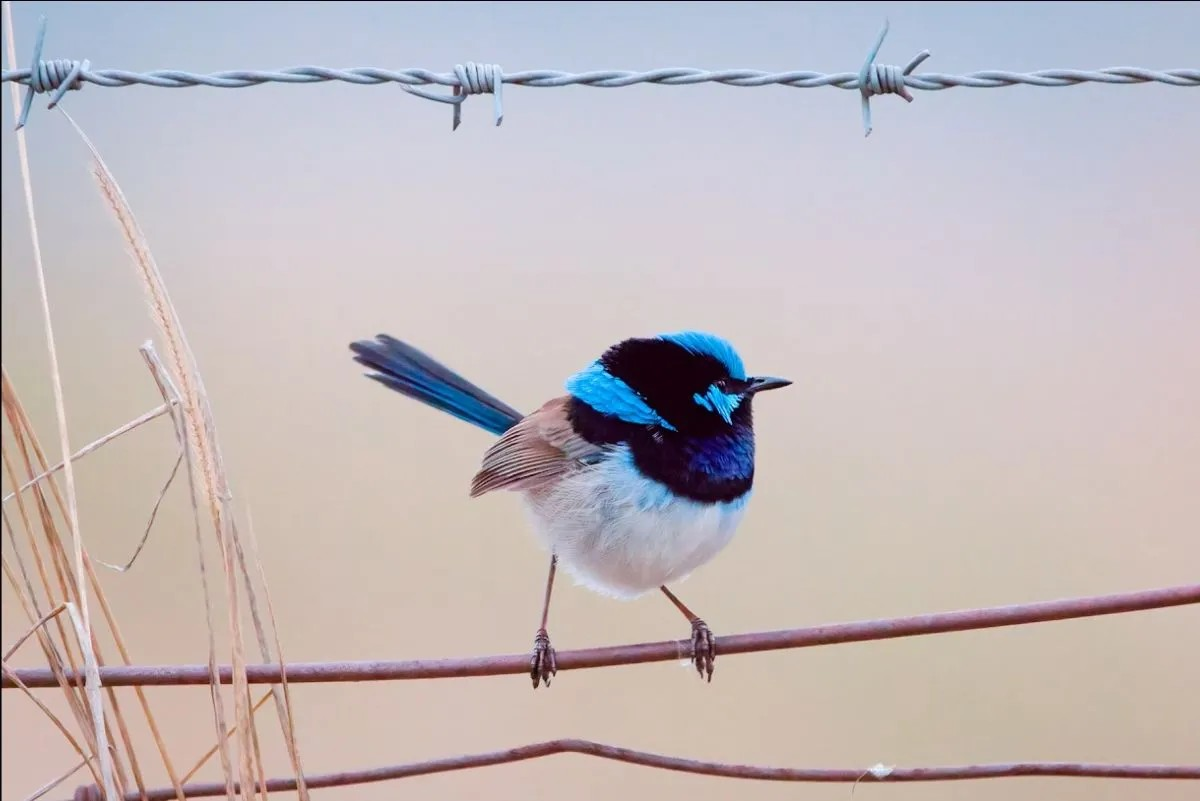
Damien Farine (E&E) has spoken with numerous media outlets about recent population declines in our superb fairywren population at the Australian National Botanic Gardens. Read the ANU Reporter article Winter takes its toll on Canberra’s birds, the ABC article Researchers have counted superb fairy-wrens at National Botanical Gardens for 40 years — 2025 was 'confronting', the Region's Warming takes the heat out of fairy-wrens and Goulburn Post's Beloved fairywrens take slow flight towards extinction for more information.
News
Kioloa Orienteering
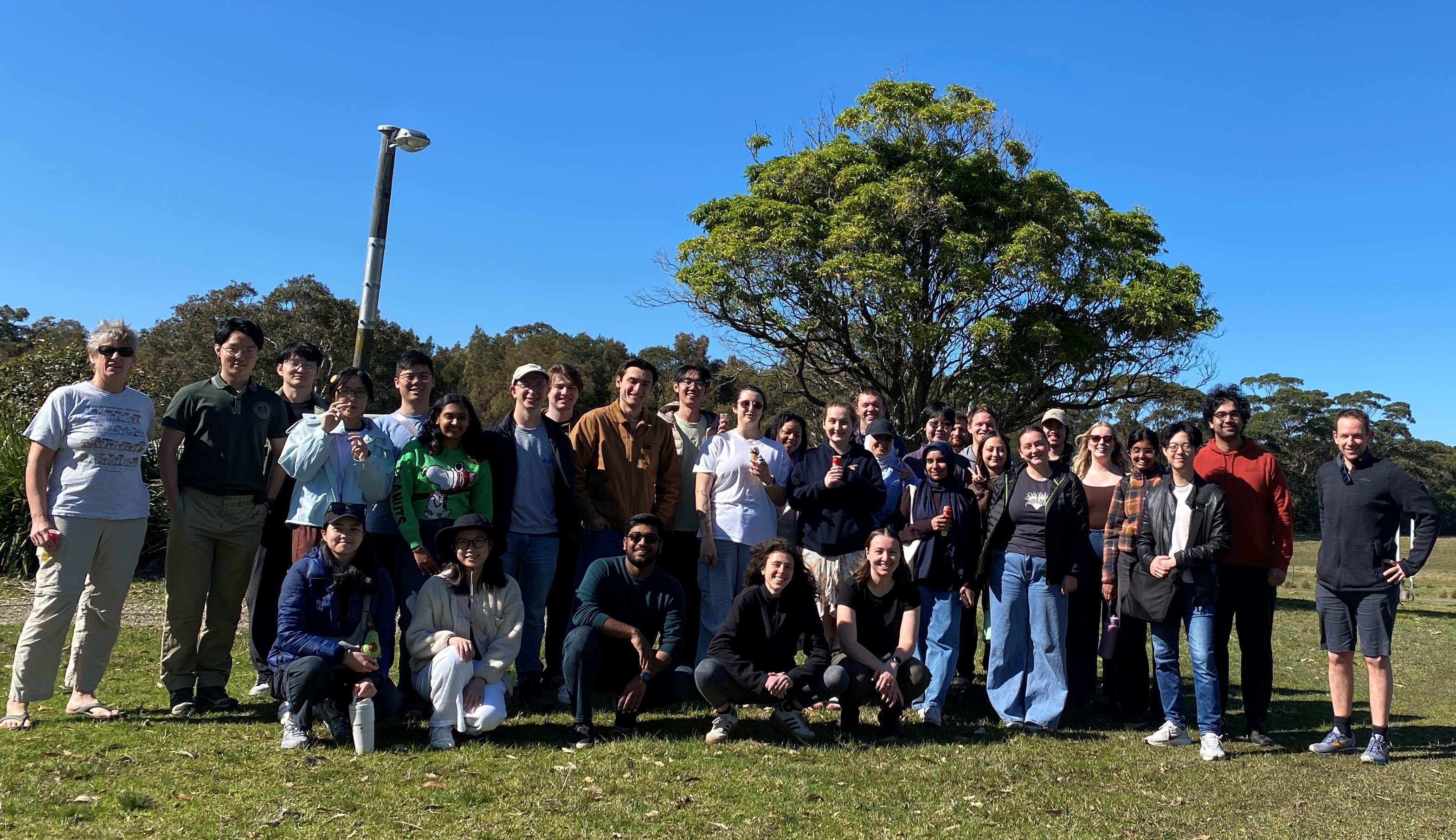
On Friday 12 September, 34-ish new-ish HDR students set off for ANU’s Kioloa campus for a weekend of fun activities and getting to know each other. Our instructions were to pack sunny clothes, sunscreen and “no stress allowed!”. The wonderful HDR reps had organised some icebreakers to get us started, which involved getting tangled up in ropes and consistently forgetting each other’s favourite animals. Next, we strategically filled buckets with sponge water, played an artistic version of Chinese Whispers, and (attempted to) pick-up cones on the beach while blindfolded. The night ended with some spicy “You can't ask that” questions for the leaders of RSB.
On Saturday, we had some inductions and HDR advice, along with thesis drawing, and finished the night with some trivia which ended in a tie! (...then a recount, where the proper winner was announced)
On Sunday, we filled up with sticky date pudding and ice cream for breakfast, and departed for a relaxed drive home.
We were well fed with two lunches, two dinners and lots of snacks, and both nights had pleasant campfire conversations. There was also plenty of free time to make friends with the locals (octopi, frogs, whales, birds, kangaroos, and cows).
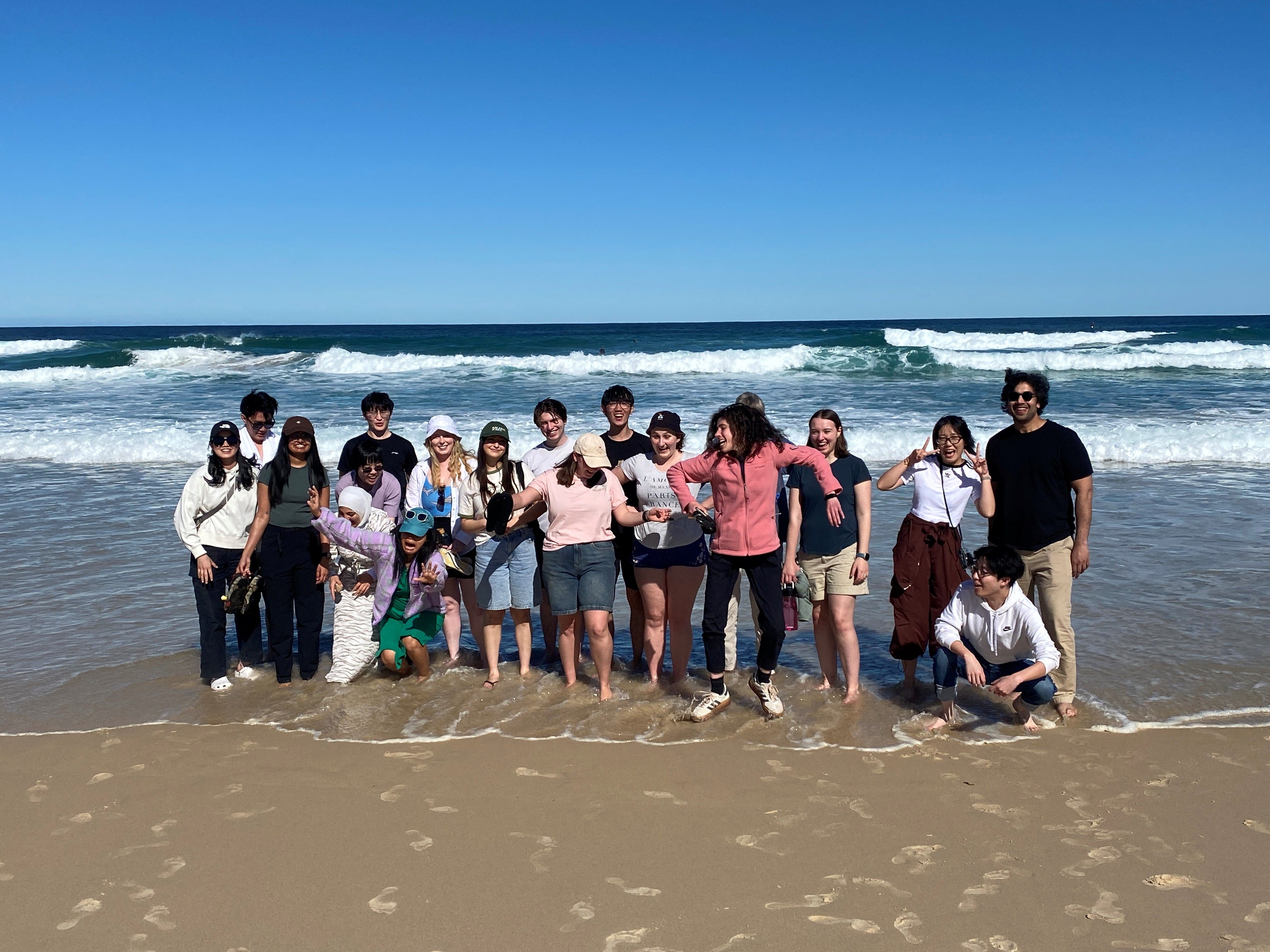
Thanks to Celeste Linde (E&E), Alexandra Williams (Brock Group, BSB), Ciara Wallis (Corry Group, BSB), Hafiz Sabah-Ud-Din Mazhar (Danila Group, PS), Arslan Mahmood (Millar Group, PS), Sabrina de Zen (Nicotra Group, E&E) and Fran Hacker (Farine Group, E&E) for organising. Thanks to the HDR convenors -Peter Solomon (PS), Scott Keogh (E&E) and Giel van Dooren (BSB)- Uli Mathesius (PS) and Craig Moritz (E&E) for answering important questions. Finally, a big thankyou to all the HDR students for making it a great weekend! Written by Chris Bradley (Borevitz Group, PS) and Grace Jones (Tham Group, BSB)
Damien Farine (E&E) spoke about his experience in obtaining an ERC grant to a seminar run by the European Research Council and Euraxess (Australia & New Zealand). This webinar provided background information on what grants the ERC offers and Damien shared his reflections on the process. The webinar was attended by over 400 people across Australia, New Zealand and Asia.
Outreach
ANU Primary Schools Enrichment Event: Inspiring Future Scientists
The ANU Primary Schools Enrichment Event is an annual program that introduces primary students to hands-on scientific exploration while showcasing pathways to university and science careers. Run by RSB in collaboration with Tuggeranong schools, the two-day event combined a campus Open Day with lab-based challenges. On day one, students explored the ANU campus, attended a science lecture, and participated in interactive activities. Day two placed them in our teaching labs, where they explored fun and engaging science investigations, guided by our staff and supported by twelve Year 10 student mentors.
The thirty-six Year 6 students examined microscopic freshwater organisms, extracted plant dyes to test on different textiles, and modelled ocean currents using coloured solutions. Each activity was designed to develop skills of observation, analysis and teamwork. They presented their findings to peers during the event and later shared outcomes at school, extending the program’s reach into the wider community.
Initiated by Sarah Fletcher, STEM specialist teacher at Bonython Primary School and recipient of the 2020 Prime Minister’s Prize for Excellence in Science Teaching, the program addressed the issue that many students perceive science as abstract and disconnected from real-world applications and future career opportunities. By engaging students early, the program aims to make science and university study feel accessible.
Maja Adamska (BSB) highlighted the program’s impact:
“By the time young people reach university, many decisions about their interests and pathways are already made. Programs like this show them early that science is not only interesting but attainable.”
Maja Adamska - Associate Director Education, RSB
Now in its eleventh year, the event reaffirms the value of university–school partnerships in cultivating curiosity, confidence, and aspiration among the next generation of scientists.
ABC Radio Canberra covered the event: ANU Primary Schools Enrichment Event: Inspiring Future Scientists
RSB Spotlight
Ecology and Evolution
In this E&E spotlight we continue our celebration of recent high-profile publications. These include a publication in Nature by Dyer et al, and senior authored by RSB research associate Eric Warrant (Ziel Group, E&E), which has enhanced our understanding of migration by Bogong moths. These moths are an iconic species with deep cultural significance to Aboriginal peoples. Past work by the team showed that these moths use magnetic cues on their 1000 km journey to and from the Australian Alps, where the moths then aestivate over summer. The team have now used flight simulators and simulated night skies to demonstrate that the moths additionally use the position of stars as a compass to navigate. This is the first study to show that an invertebrate navigates using the stars.
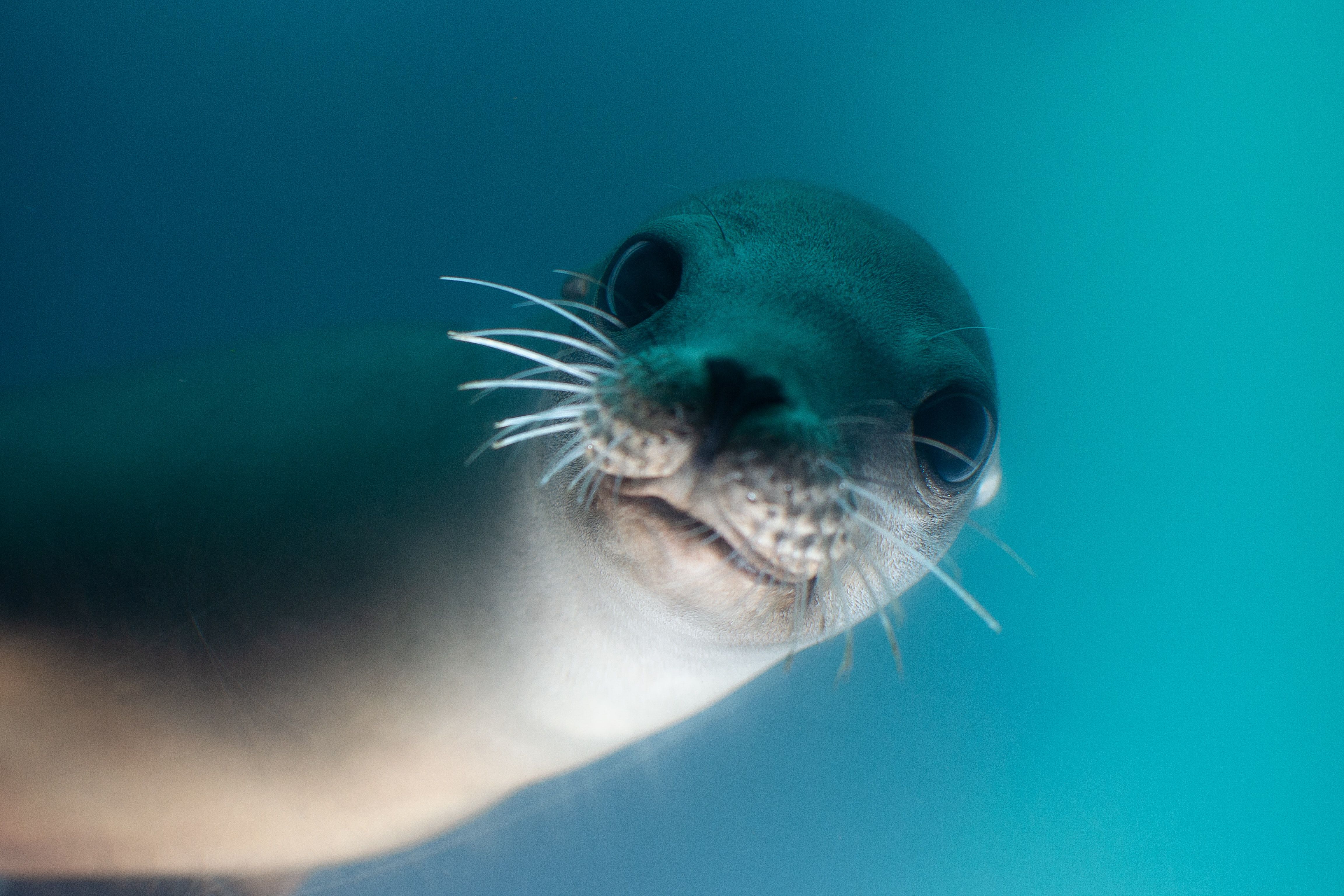
In another ground-breaking study published in Science by Ana Sequeira (E&E), and co-authored by her MegaMove team of ~ 400 co-authors, the most critical ocean areas for marine megafauna have been identified for the first time. This was achieved using the largest global tracking dataset ever assembled for marine megafauna, spanning over 110 species across 30 years. The study further revealed that marine animals spend 90% of their time in Important Marine Megafauna Areas, but only 5% are currently within protected areas, thus highlighting urgent priorities areas for global conservation efforts. Ana is also lead author with ~ 300 co-authors, of a follow up paper in press in Conservation Biology.
Damien Farine (E&E) and his Group members James Klarevas-Irby (Farine Group, E&E) and Brendah Nyaguthii (Farine Group, E&E) are co-authors in an international team that has published a major synthesis in Nature Ecology and Evolution. Using data from over 30 species, the study tested the relationship between population density and social contact rates. The key finding is that most species appear to show social compensatory mechanisms that act to avoid frequent contacts at high population densities. The same three authors have also published an innovative paper in Current Biology. They combined heart rate sensors with high-resolution GPS tracking to show that birds pay a physiological cost when attempting to lead their group. Furthermore, this cost is particularly high when there are conflicting preferences among group members.
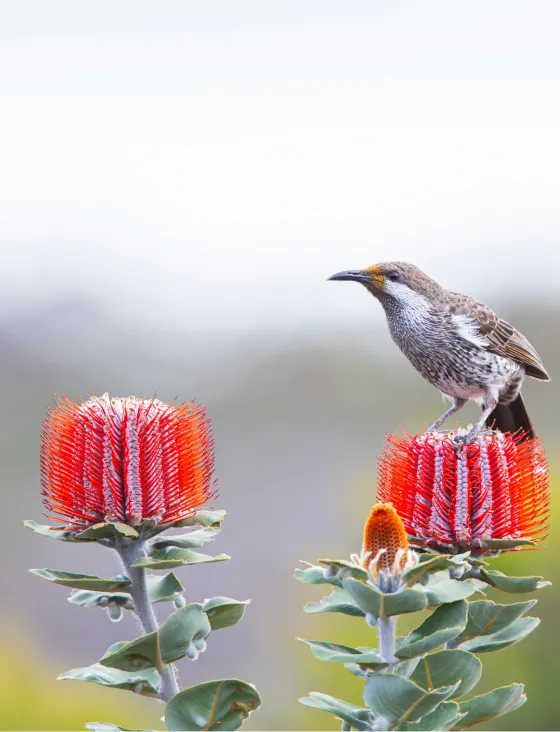
In an exciting study published in PNAS (USA), led by DECRA fellow Alex Skeels (Cardillo Group, E&E) with Marcel Cardillo (E&E) as senior author, an international team showed for the first time how climate and biome change in deep time has affected diversification of Proteaceous plants. A key finding is that current biodiversity hotspots in places such as southwest Australia can be traced back to historic climate change events.

Finally, hot of the press in Science, a new study with Alexander (Sasha) S. Mikheyev (E&E) as co-senior author, has taken a new approach to analysing museum specimens to reveal a massive decline in biodiversity in Fiji’s native ant species since the arrival of humans to the islands. The team used changes in genome level diversity to identify whether populations of different species were shrinking or growing. The evidence suggests that 79% of native species have shrinking populations, while the populations of invasive ant species are increasing rapidly.
Authored by Rod Peakall (E&E) and Michael Jennions (E&E)
From the APPN
From the Research Committee
New internal grant scheme – Scaling Impact and Collaboration (SIC)
The RSB Research Committee is excited to announce a new internal grant scheme, Scaling Impact and Collaboration (SIC).
The scheme is designed to support collaborative team science at RSB and beyond. SIC’s intended endpoint is to unlock new mid- to large-scale research funding opportunities. SIC will help support teams to refine and grow their vision to expand research engagement and impact.
The emphasis is on facilitating a development process that encourages strategic planning, co-design, and reflection. SIC grants aim to be a vehicle for RSB researchers to collaborate across the School and externally to define meaningful strategic research development pathways and advance through checkpoints that enable broader engagement and impacts over the next 12-18 months. Budget size is either $12.5k or $25k. We anticipate awarding 1-2 grants per area (e.g. per cross divisional theme, per Division, etc.) with a focus on scaling engagement and fostering shared momentum towards a major grant initiative that supports the RSB research funding portfolio.
Applications are now open. Deadline: 31st Oct 2025, Assessment Period 3 - 7 Nov. Announcement: 2nd week of November
Send questions to charles.morgan@anu.edu.au and benjamin.schwessinger@anu.edu.au
Publications
Akuh O, Maus D, Blume M, Saliba KJ & Seeber F. Reconstituted ferredoxin–MEP pathway of Apicomplexa in E. coli as an in situ screening platform for inhibitors and essential enzyme mutations. Journal of Biological Chemistry. https://doi.org/10.1016/j.jbc.2025.110726.
Albery GF, Becker DJ, Firth JA, Farine, D.R., Klarevas-Irby, J.A., Nyaguthii, B et al. Density-dependent network structuring within and across wild animal systems. Nature Ecology & Evolution. https://doi.org/10.1038/s41559-025-02843-z.
Bowerman AF, Moore M, Yadav A, Zhang J, Mortimer MD, Plšková Z, Tee EE, Au EK, Collinge DP, Estavillo GM, Chan KX, Pogson BJ et al. Modulation of SAL retrograde signalling promotes yield and water productivity responses in dynamic field environments. New Phytologist. https://doi.org/10.1111/nph.70579.
Cleaver A, Crean L & Howitt S. Student perceptions of cognitive, psychomotor and affective learning in the undergraduate laboratory. Biochemistry and Molecular Biology Education. https://doi.org/10.1002/bmb.70011.
Dawood WA, Fisher GM, Kremeyer J, Lam KS, Maier AG et al. Antiplasmodial activity of pentyloxyamide-based histone deacetylase inhibitors against Plasmodium falciparum parasites. International Journal for Parasitology: Drugs and Drug Resistance. https://doi.org/10.1016/j.ijpddr.2025.100608.
Farine DR, Davis GH & Crofoot MC. Optimal foraging can drive emergent initiator-follower dynamics in social groups. Oikos. https://doi.org/10.1002/oik.11687.
Farkas K, Brown ZA, King JL, Nicotra AB, Head ML & Arnold PA. Combined heat and drought affect the abundance, composition and diversity of subalpine surface-active soil arthropod communities. Ecological Entomology. https://doi.org/10.1111/een.70015.
Gionfriddo M, Birch R, Rhodes T, Whitney S et al. Laboratory evolution of Rubisco solubility and catalytic switches to enhance plant productivity. Nature Plants. https://doi.org/10.1038/s41477-025-02093-8.
Huppertz F, Caturelli MS, Lehmann L, Kurth F, Maier AG & Matuschewski K. Experimental genetics validation of Plasmodium falciparum gametogenesis essential protein 1 (GEP1) as a transmission blocking target. Federation of European Biochemical Societies Letters. https://doi.org/10.1101/2025.05.28.656680.
Kreuter N, Fernández-Gracia J, Eguíluz VM & Sequeira AMM. Inferring leader-follower dynamics in three shark species using acoustic telemetry data. Movement Ecology. https://doi.org/10.1186/s40462-025-00589-8.
Maleszka R. Is the concept of mammalian epigenetic clocks universal and applicable to invertebrates? Frontiers in Genetics. https://doi.org/10.3389/fgene.2025.1633921.
Maleszka R, Cardoso CMA & Pellegrini M. Still no evidence for an environmentally responsive epigenetic clock in an insect. Proceedings of the National Academy of Sciences of the United States of America. https://doi.org/10.1073/pnas.2523241122.
Martin, LD, Razatimanantsoa H, Nomenjanahary ES, Magrath RD et al. Passive acoustic cue counting surveys for vocal primates: a field test on the Critically Endangered Nosy Be sportive lemur (Lepilemur tymerlachsoni). International Journal of Primatology. https://doi.org/10.1007/s10764-025-00500-7.
Posch BC, Amoanimaa-Dede H, Aparecido LMT, Atkin OK, Coast O, Scafaro AP et al. Tansley Review: High temperature acclimation of photosystem II in land plants. New Phytologist.
Sequeira AMM, Rodriguez JP, Marley SA et al. Global tracking of marine megafauna space use reveals how to achieve conservation targets. Science. https://doi.org/10.1126/science.adl0239.
Tao E & Corry B. AlphaFold2 captures conformational transitions in the voltage-gated channel superfamily. Biophysical Journal. https://doi.org/10.1016/j.bpj.2025.08.033.
Wragg SA & Braby MF. Systematics and phylogenetic relationships of the Australian Agaristinae (Lepidoptera: Noctuidae) based on morphology, including a revised checklist of the subfamily. Records of the Australian Museum. https://doi.org/10.3853/j.2201-4349.77.2025.1911.
Xie Y, Nakano Y, Tummala P, Casarotto MG et al. Development of potent glutathione transferase Omega-1 inhibitors with applications in inflammation and cancer therapy. European Journal of Medicinal Chemistry. https://doi.org/10.1016/j.ejmech.2025.118072.












